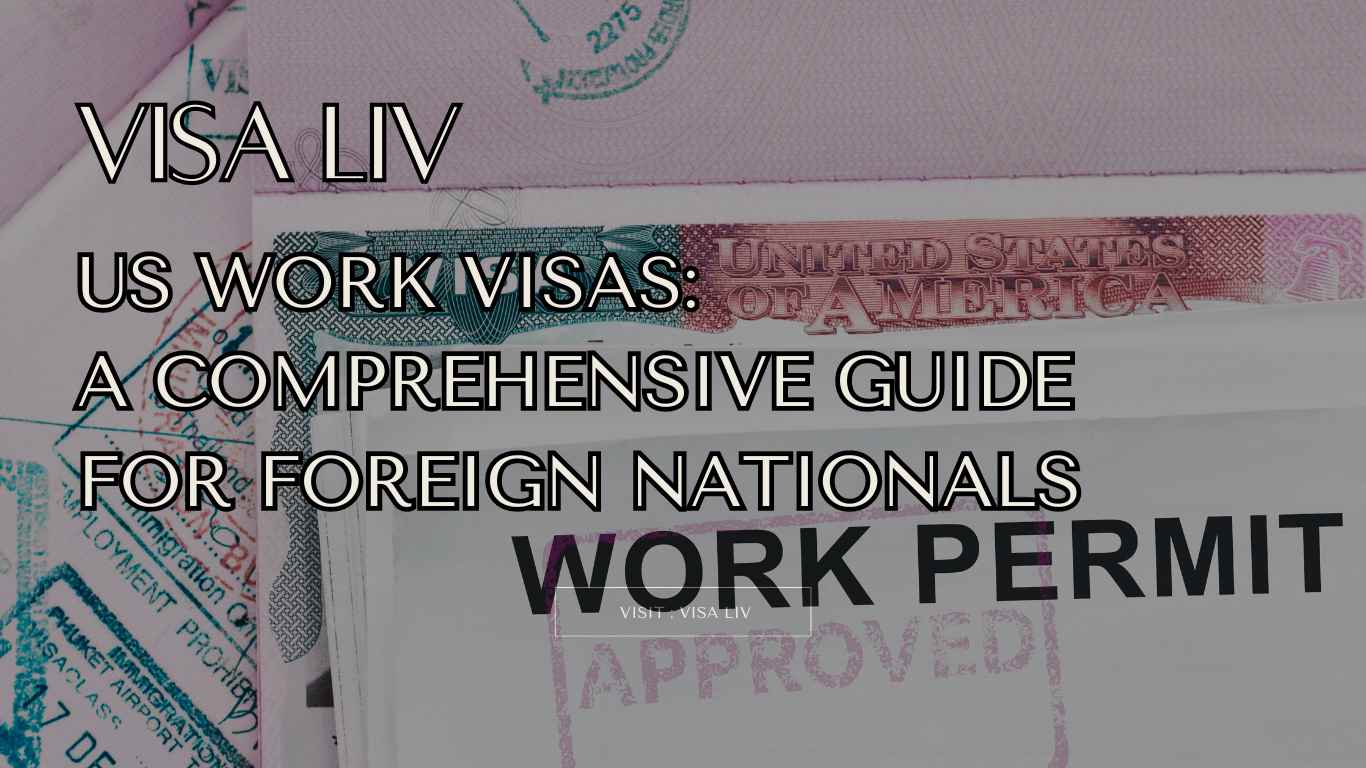Introduction
The United States remains a coveted destination for skilled workers globally, making the understanding of its intricate visa system essential for those aspiring to work there. This comprehensive guide aims to demystify the complexities surrounding US work visas, equipping foreign nationals with the necessary information to navigate the process successfully.
Temporary Work Visas: Your Gateway to US Employment
For nonimmigrants seeking temporary work opportunities in the US, securing a sponsoring employer is typically the initial step. This involves filing a petition with the US Citizenship and Immigration Services (USCIS) on the applicant’s behalf. The popular H-1B visa caters to skilled workers with specialized knowledge in various fields, including computer science, engineering, and education.
Long-Term Work Authorization: Achieving Permanent Residency
Beyond temporary employment, the employment-based immigrant visa provides a pathway to permanent residency. It involves meeting specific criteria related to education, training, and job experience. This visa falls under five main preferences or categories, accommodating various skilled workers, including professionals with advanced degrees, exceptional abilities, and multinational managers or executives.
Required Document Checklist:
A smooth application process demands careful preparation. The following checklist provides essential documents required for both temporary work visas and long-term work authorization:
Temporary Work Visas
- Petition for a Nonimmigrant Worker (Form I-129): Filed by the prospective employer.
- Nonimmigrant Visa Application (Form DS-160): Completed by the applicant.
- Photograph: Meeting passport photo requirements.
- Passport: Valid for at least six months beyond the planned stay in the US.
- Proof of Financial Support: Demonstrating the ability to support oneself in the US.
- Additional Documents: May include a birth certificate, marriage certificate, or diploma, depending on the visa classification.
Long-Term Work Authorization
- Petition for a Nonimmigrant Worker (Form I-140): Filed by the prospective employer.
- Application for Immigrant Visa and Alien Registration (Form I-485): Completed by the applicant.
- Civil Documents: Including birth and marriage certificates.
- Medical Examination: Mandatory as per requirements.
- Photograph: Meeting passport photo requirements.
- Fingerprint: Submission of fingerprints.
- Interview: Attending an interview with a consular officer.
Additional Avenues
- Application for Change of Status (Form I-129): This form must be filed if you are currently in the United States under a nonimmigrant status that does not grant employment authorization.
- Application for Adjustment of Status (Form I-485): This form must be filed if you are currently in the United States and seeking to adjust your status to lawful permanent resident.
Self-Petitioning and Employment Authorization
- Application for Employment Authorization (Form I-765): This form must be filed if you are requesting employment authorization.
- Other documents: Depending on your visa classification, you may need to provide additional documents, such as a birth certificate, marriage certificate, or diploma.
Navigating the Visa Application Process: A Step-by-Step Guide:
The visa application process involves several crucial steps that applicants should follow:
- Gather Documentation
- File Petition
- Receive Petition Approval
- Apply for Visa
- Attend Visa Interview
- Obtain Visa or Entry Authorization
- Enter the US
Exploring Additional Avenues: Change of Status and Adjustment of Status
Applicants already in the US under a nonimmigrant status without employment authorization can explore options for a change of status or adjustment of status. This often requires a US employer or another qualified entity to file an application or petition on the applicant’s behalf to establish eligibility.
Navigating the Complexities: Self-Petitioning and Employment Authorization
Certain visa classifications allow for self-petitioning, enabling applicants to file independently. Moreover, those already in the US can request employment authorization and an Employment Authorization Document (EAD) by submitting Form I-765, Application for Employment Authorization. This option may apply even if the immigration status permits unrestricted work in the US.
Conclusion: A Path to Success
While navigating the US work visa system might appear daunting, with the right guidance and understanding, foreign nationals can successfully pursue their career aspirations in the United States. It’s advisable to stay updated on the latest changes by consulting with an immigration attorney, considering the dynamic and evolving nature of the US work visa system.
Please visit our website www.visaliv.com for more details, where you will find answers to all of your visa and immigration-related questions.
Thanks,
VisaLiv Team

